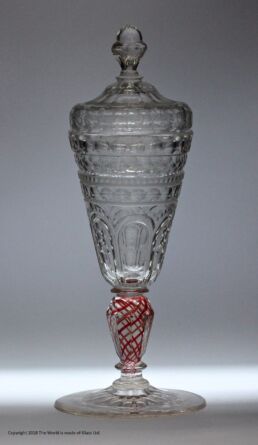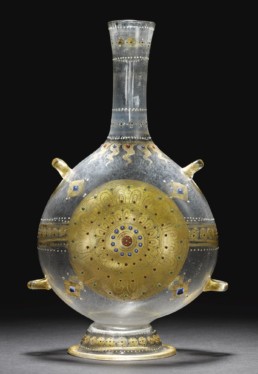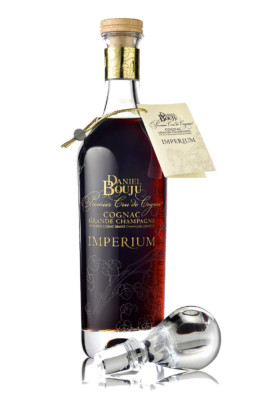The MSV workshop engraves both glass and crystal. However, these two materials are very different and cannot be understood in the same way. Glassmaking has its subtleties, MSV reveals you its secrets !
The first transparent glass appeared in Venice in the 15th century and it was a major revolution. Previously, glassmakers had only succeeded in producing translucent glass with reflections oscillating between grayish yellow, green and blue. The raw material used was the source of the problem and it probably took countless attempts before finally achieving a perfectly transparent glass.
Venetian crystal and Bohemian crystal
In the middle of the 15th century, the famous glassmaker Angelo Barrovier (whom died in 1496) developed the first European translucent glass. If its purity arouses admiration, its fragility is very great. Anyway, such a feat becomes the source of a luxurious production that the greats of Italy and Europe are snapping up. There is no one up to the Pope who does not have a delicate carafe or bottle in Venetian crystallo on his table. The recipe makes the wealth of the city of the Doges. Venetian glassmaking has become so lucrative that the city’s political powers are protecting tooth and nail the secret of this perfectly transparent glass. No excuse is enough to allow a glassmaker to leave the city, it is too feared that he will divulge the secrets of the precious crystallo to strangers. The mistrust is such that the measures taken to defend the Venetian glass are more than crippling, going so far as to condemn to death the craftsmen disclosing outside the lagoon the arcana of the workshops.
It is that the flexibility of the work of Venetian glass allows all kinds of fantasy that ordinary glass did not yet allow. Glassmakers thus create new forms of bottles and decanters which can be engraved, enamelled or gilded according to the wishes of the sponsors. Of course, such an object of luxury and refinement arouses curiosity as well as lusts. All over Western Europe, glassmakers are trying to unravel the secret of the Venetian “crystal”. Despite threats from the authorities, some members of this profession – itinerant by nature because it must move according to the availability of the raw materials necessary for its art – will leave the Most Serene Republic and the glass-making secret will gradually cross the Alps.
La Bohême soon produced “Venice-style” glasses because one did not have the specific raw materials capable of imitating Italian glass perfectly. So one copies patterns and shapes as best as possible. However, the rich forest resources of this region allow in the 16th century the elaboration of a glass as hard and as heavy as rock crystal. With this translucent and very solid glass, Bohemia surpasses Venice by approaching even more the imitation of this mineral of a fascinating purity. Bohemian crystal is easily engraved and cut, so that masterpieces are made by great artists. Bohemian crystal glassware enjoys European renown. The princely courts tear themselves away and adorn their tables with these superb creations with baroque motifs.
The Real Crystal
The invention of lead crystal ushers in a new era in glassmaking. In the 17th century, the English were the first to transform glass into crystal and, if the recipe is still based on silica, a new ingredient will change everything. The use of lead makes it possible to give the glass a brilliance, a solidity and even a sound hitherto unmatched. The qualities of this new material are such that it differs greatly from glass. The first real crystal has just seen the light of day. And within a few years, the English crystal works surpassed both Venice and Bohemia.
Art works, lighting and even furniture in English crystal are exported from England to Europe, Russia, the East and India. At the end of the 18th century, the trade secret crossed the Channel and reached the north of France. The glassmakers of the Saint-Louis factory were the first to produce crystal pieces, followed in the 19th century by Baccarat and a few small glassworks in Île-de-France. The arts of the table, the development and refinement of gastronomy under the Empire gave a real rise to this crystal which magnifies tables and lights. Crystal glasses, decanters and bottles are first cut and engraved to appreciate the brilliance and purity of this material capable of reflecting light in a spectacular way. Joséphine de Beauharnais only uses crystal for her receptions and largely contributes to the reputation of French savoir-faire in this field.
From the second half of the 19th century, no table worthy of the name goes without crystal. Its refinement is such that nothing dethrones it even today. There is no bottle or decanter more luxurious than crystal ones. The famous wine and spirits houses want nothing else to showcase their finer ranges. This is why MSV calls on the most famous crystal makers for its high-end creations. Precious crystal bottles, decanters and flasks are embellished with custom engravings and carry your identity in the tradition of the greatest French houses. Can we help you for your project ? Contact us!



